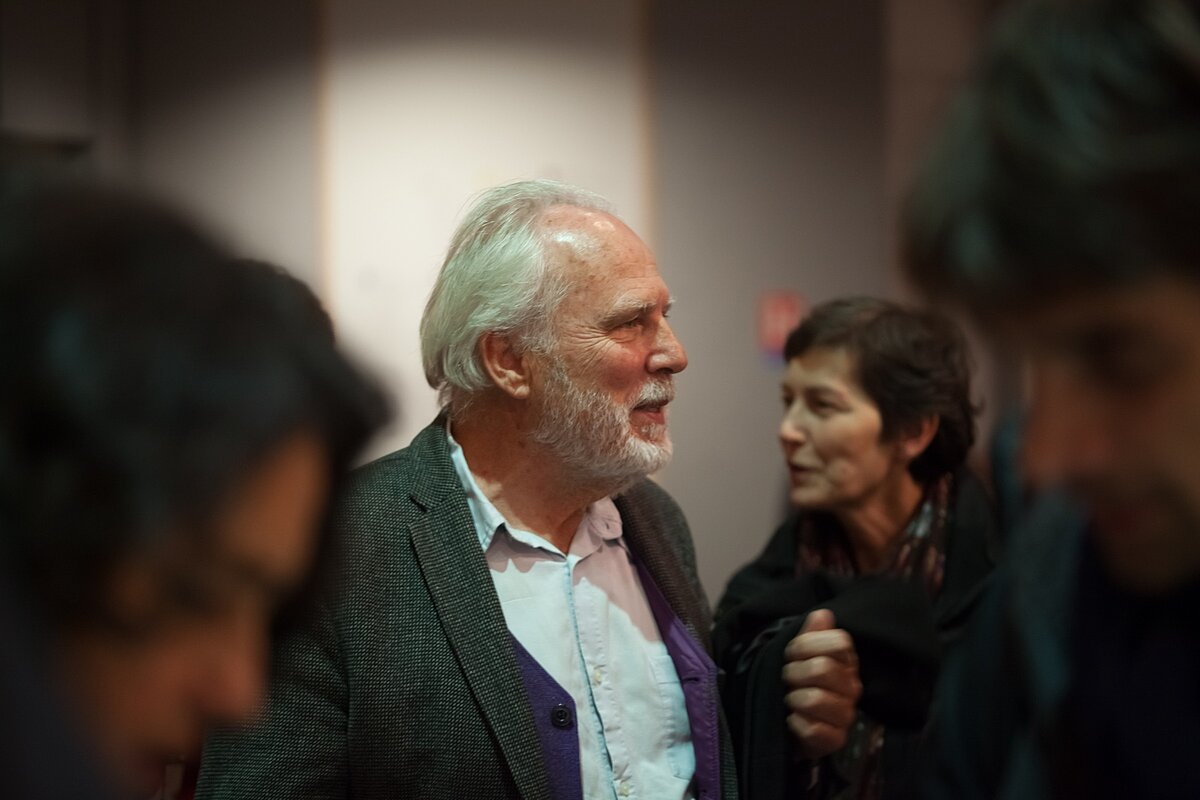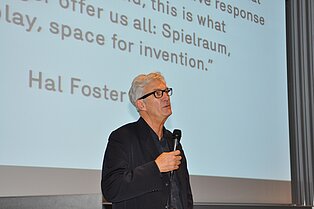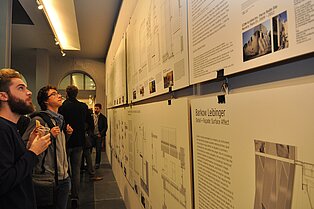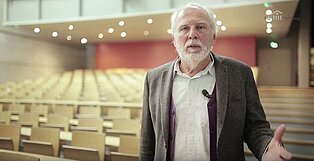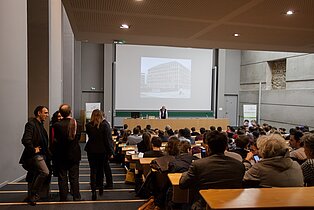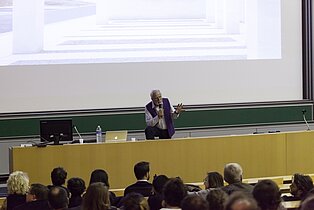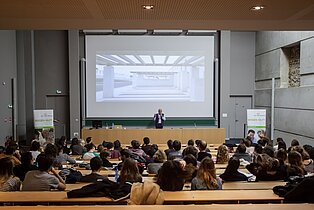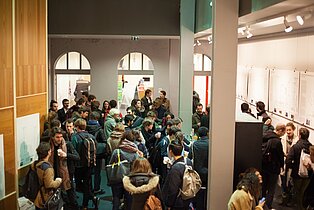A Detail is the Result of a Project Process | Gilles Perraudin
When attending a lecture given by an architect, one usually expects to see smart images. Gilles Perraudin's architecture perfectly fulfils this expectation. Indeed, photographs from the wine museum of Patrimonio or the social housing units he recently delivered near Blagnac have a graphic quality : the rythm of the pergolas' shadows on the limestone blocks immerge us into an elementary geometrical world. To architecture students, it is a reminder of the first year exercises and descriptive geometry lessons. When the few elements available to compose a space were walls, beams, stairs and shadow drawing. These shadows, patiently modelled with a pencil, in order to carve a space into the sheet of Canson paper.
This illusory space might be left restricted to the first years of architecture learning. However, an architect such as Gilles Perraudin still seems to live within it, although he has a long carrier behind him. He shows synthetic axonometric views of his projects, which prove that a simple line drawing is enough to express the essence of an architecture. His praising of Tessenow's drawings shows that this way of seeing architecture stems from a deep commitment.
Tessenow is a German architect from the 20's who did not participate in the modern movement. Like other architects, he defended the simplification and unification of housing typologies, but he did not want to industrialize construction processes. He simply wanted a stabilization of the productive rapport between bourgeoisie and artisans. For him, the tradition was an ideal to be conquered. The crystalline forms he conceived were simply an expression of the manual techniques without any useless virtuosity. Indeed, it was in the wholesomeness of good artisanship that he was looking for the essence of the « maison bourgeoise ». The same goes for the tectonic of Gilles Perraudin's wall. It expresses simply the moment of its piling up, an assembly, which only requires the presence of some artisans and a crane. If he is fascinated by the knowledge of the companions, his habit is to work with simple masons.
This way of conceiving architecture, rejects any fascination for architectural detailing: the detail is only the result of a project process and does not convey any specific intents. To the student who asks him why he conceals the beautiful trusses of the sport hall at Chirens behind a suspended ceiling, he simply answers that it enables to reduce the volume that is to be heated and explains that software simulation had shown that the suspended flat surfacing material increased light propagation. This renders the conception of the framework no less precise, as revealed by the post-factum axonometric section : it is in the sincerity of his approach that the tectonic expression defended by Perraudin resides.
This is the premise for Perraudin's militant discourse against perverse normative, conceived from his point of view to favor building industry. He explains for example that Claudius Petit sustained the prefabrication after WWII to favor big firms against artisans. It might be possible to make the same analysis from the recent laws, which principally favor outside insulation denying the specificity of each project. Gilles Perraudin is proud to explain the strategies he imagines for his projects to profit from the blind spot of rules. This kind of civil disobedience is necessary from his point of view, to save the architect's profession facing to a normative context always more restrictive.
How political his vision of an architect's job might be, the return to stone he militates for does not mean anti-globalism. Stone is a noble material, sustainable and reusable. If in the economy of a project, it is ecologically affordable to obtain a specific type of stone coming from afar, why go without it? As if Abbot Suger did not contemplate bringing stone from Rome to build the Saint-Denis basilica before discovering by miracle stone quarries in Pontoise?
Gilles Perraudin at the Sto-Stiftung Novembertalks 2015 in Paris
Watch the interview with Gilles Perraudin (Video-Clip | 1:15 Min.).


